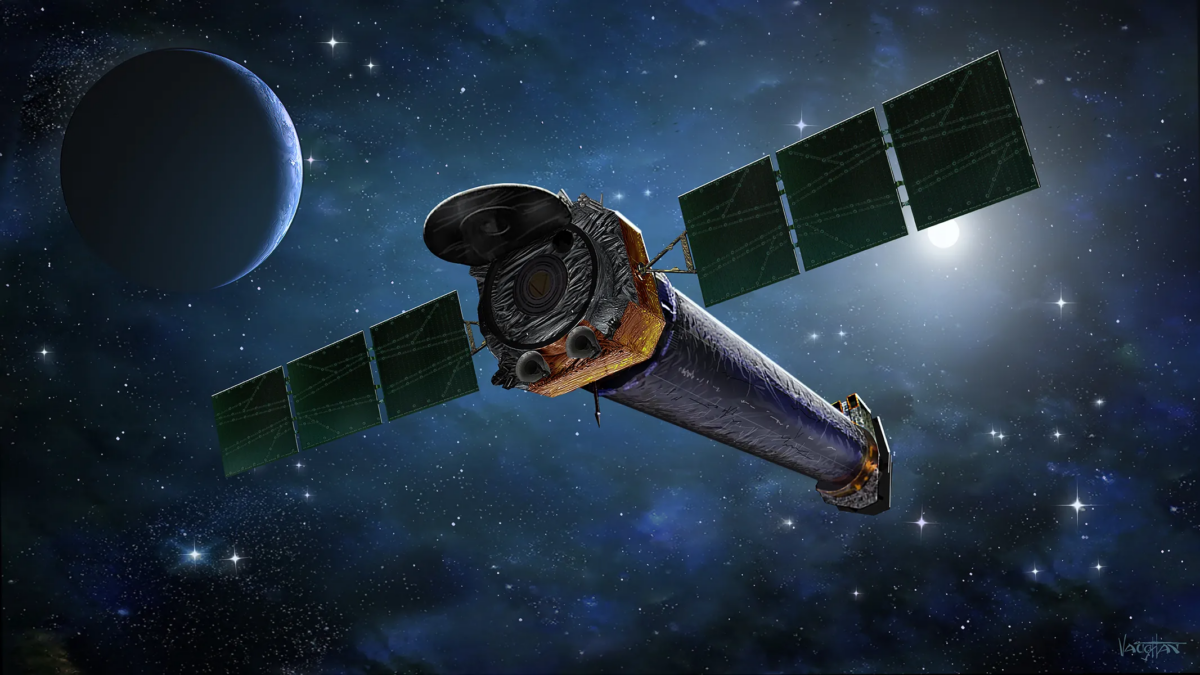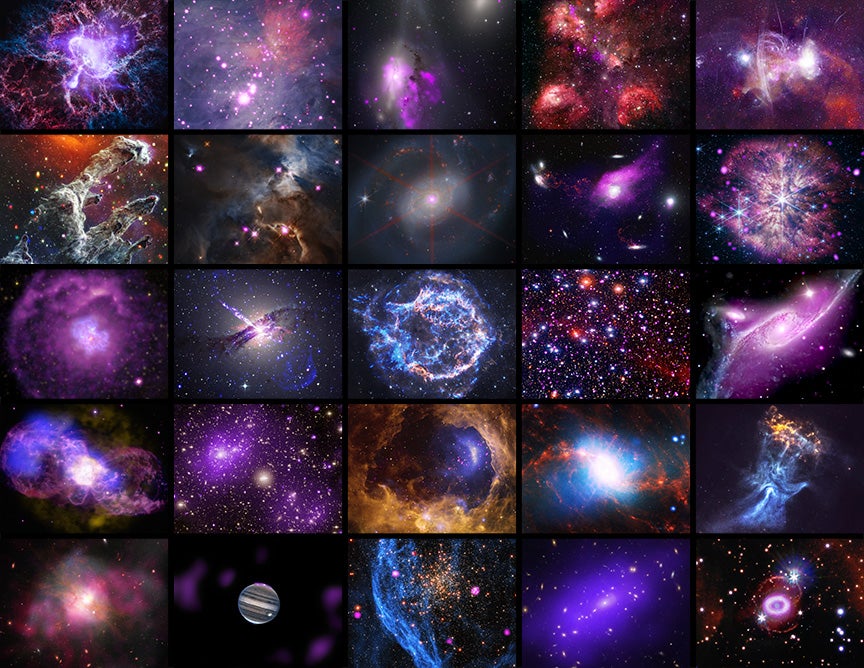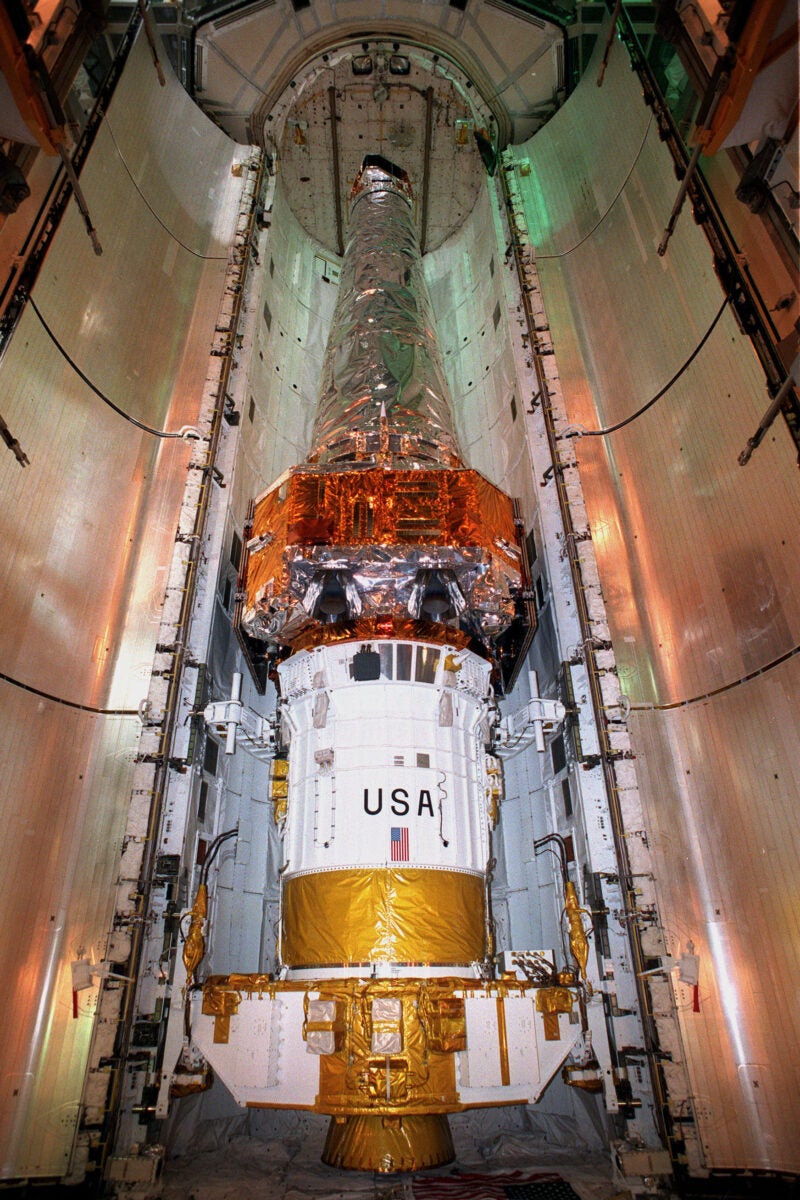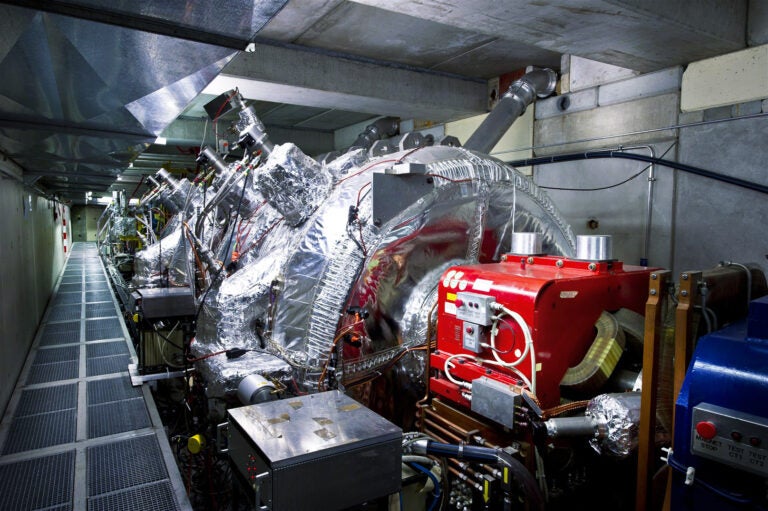
All space missions come to an end. Some die quietly of old age, running out of fuel or power. Some go in a blaze of glory, plunging into an atmosphere and burning up, sending back data to the last. Others self-destruct, never reaching their intended targets — blowing up on the launch pad, or ending up as an accidental impact crater on an alien world.
But earlier this year, when NASA announced that the Chandra X-ray telescope was facing the end of its days, it wasn’t for any of those reasons. The telescope was fully operational, continuing to produce cutting-edge science. Rather, NASA was facing budget shortfalls — and it deemed the observatory expendable.
In the history of NASA, perhaps no fully operational mission this large and productive has ever been scrapped simply because the agency decided not to foot the bill.
Chandra has the most resolving power of any X-ray telescope ever built, and for 25 years has provided astronomers with penetrating views of the invisible universe, including stellar explosions, evidence of black holes, and other exotic objects. Today it remains one of the most productive and oversubscribed observatories in NASA’s portfolio. In 2022, NASA reviewers rated Chandra among its most successful ongoing programs on par with Hubble.
But in March, officials put it on the chopping block, scheduling 80 layoffs representing most of its operating team as soon as September. That same month, NASA requested just $41 million for Chandra in the agency’s 2025 budget — a 40 percent reduction — in order to begin an “orderly mission drawdown to minimal operations.”
The move has sparked a remarkable wave of protest from the global astronomical community — and it has made an impact. At least one recent interview given by NASA administrator Bill Nelson offers hope that the telescope might be saved. For now, Chandra remains in limbo, but NASA is expected to make an announcement next month regarding the mission’s short-term fate.
To many researchers, cutting costs by targeting a productive mission like Chandra makes no sense. Chandra’s annual operating budget is $68 million, just 1.8 percent of the total amount that NASA has spent on the telescope since 1999. One scientist likened killing the mission to having a beautiful home in great shape with a paid-off mortgage, and burning it down to avoid a year of utility bills.
Chandra also maintains U.S. leadership in X-ray astronomy, a field that U.S. researchers founded in the early 1960s. Scientists say that Chandra’s sudden shutdown would leave a discovery gap for decades and that European and Chinese counterparts are no match for Chandra’s sensitivity and resolution.

A technological marvel
When Chandra rocketed to space July 23, 1999, aboard the space shuttle Columbia, it was a revolutionary advance over the previous generation of X-ray telescopes.
“Chandra is a technological marvel,” says David Pooley, an astronomer at Trinity University in San Antonio, Texas, citing the exceptional smoothness of its four concentric pairs of mirrors. Unlike traditional telescopes, they are oriented at extremely shallow angles in order to capture glancing X-rays that would otherwise shoot directly through the glass. “No other X-ray telescope has had a spatial resolution approaching Chandra, ever,” says Pooley. “It is very difficult to make mirrors that focus X-rays that tightly.”
Only three years after launch, the observatory proved its worth by helping Riccardo Giacconi win the 2002 Nobel Prize in Physics for his Chandra-based research on the ubiquity of black holes in the universe. Since then, it has captured the shock waves of supernovae, the cooling rate of a neutron star, and the radiation pulses of black hole accretion disks.
But it’s not the telescope’s legacy that makes its termination galling to researchers — it’s the lost potential for continued operations. With 10 years’ worth of fuel still aboard and no serious mechanical issues, Chandra could last through to the next solar maximum a decade from now, according to scientists.
Within weeks of NASA’s announcement in March, a movement called #SaveChandra launched, energizing scientists and the public worldwide with viral videos, petitions, and letters to Washington.
The pushback has had some effect. In July, Senate and House appropriations committees passed supportive budget proposals, with the Senate committing $72 million toward Chandra’s “transformative discoveries,” while citing its vital synergy with the James Webb Space Telescope. On July 25th, a House authorization bill was introduced that specifically directed NASA to “take no action to reduce or otherwise preclude continuation” of Chandra before the agency’s three-year review late next year. Although the actual 2025 federal budget is still pending, pressure from Congress may already be having an impact on NASA planning.
On Aug. 13, NASA administrator Bill Nelson told Ars Technica that the agency would strive for a new budget beyond their original request of $41 million and that layoffs would be limited.
“All of the science will be protected,” Nelson said. For some, this sounded like victory. But scientists like Pooley — who helped author a letter to NASA signed by over 700 astrophysicists around the world — remain concerned.
“The minimum budget really should be up at $72 million,” Pooley tells Astronomy. “That’s what it takes to preserve the science as well as fund the scientists who are analyzing the data.”
If Chandra is to be saved, there is not much more budgetary fat to trim. A committee convened by NASA earlier this year found that the Chandra Operations Control Center outside Boston — where dozens of specialists take shifts around the clock in a mission control room — was already operating at a bare minimum. Since launch in 1999, the mission’s work force has dropped 40 percent as specialists became ever more efficient at mission planning and operations.
Still leading the pack

The current budget shortfall is not the first threat to its existence Chandra has faced. Originally intended for a mid-1987 launch, Chandra was sidelined by the 1986 Challenger disaster and the ensuing budgetary constraints of rebuilding the Space Shuttle Program. By 1992, a deepening national financial crisis nearly canceled the project altogether, then called AXAF.
Designed to carry six mirror pairs, the telescope proved too expensive and heavy for its own good, so NASA officials opted to slash the design (and capabilities) to two mirror pairs and launch it on a Titan rocket. Frantic scientists negotiated a larger, more robust design of four mirror pairs that could fit aboard a revived space shuttle.
Their big compromise was that Chandra would be relegated to a high Earth orbit more than 80,000 miles (130,000 kilometers) away — far beyond a normal orbit of a few hundred miles. This meant that expensive servicing by space shuttle crews would be off the table. Since crews had recently saved the Hubble Space Telescope with in-flight repairs, it was a huge gamble, but at least Chandra would finally make it into space.
In July 1999, astronomers watched with apprehension as the school-bus-sized observatory launched aboard the space shuttle Columbia.
In hindsight, Chandra’s distant trajectory proved providential. The 64-hour orbit places the observatory far above Earth’s radiation belts for 55 hours at a time, facilitating undisturbed, multi-hour observations that have revealed spectacular structures and revolutionized our understanding of cosmic life and death.
Chandra’s trailblazing successes have made it clear to the rest of the world that X-ray astronomy yields tremendous dividends. The European Space Agency has committed over 1 billion euros to its next X-ray flagship, Athena, and China is in hot pursuit with an array of satellites and the recent SVOM launch that duplicates NASA’s 20-year-old Swift mission, which focuses on short-lived gamma-ray bursts.
“None of them have the combination that Chandra does of high spatial resolution and high spectral resolution,” says Pooley. “That’s why it’s such a misguided move to cut Chandra. Nothing has been able to match it for 25 years, and there’s nothing that will, for decades.”









